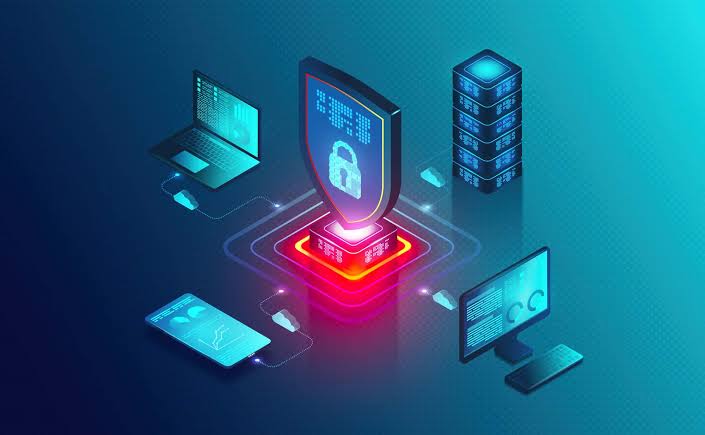In the landscape of 2024, as businesses continue to navigate the complexities of a predominantly remote work environment, the importance of cybersecurity has been catapulted to the forefront of operational priorities. This year marks a critical juncture where the fusion of technological advancements and the global workforce’s pivot towards remote operations has magnified the need for robust cybersecurity measures. In this context, securing your business’s IT services is not just a necessity but a fundamental component of your company’s resilience and growth.
The evolution towards remote work, accelerated by recent global events and technological progress, offers businesses unprecedented flexibility and access to a worldwide talent pool. However, this shift also presents new challenges, notably in securing data and applications that have now moved predominantly to the cloud. The risk landscape has evolved, with cyber threats becoming more sophisticated and pervasive, highlighting the urgency for businesses to fortify their digital defenses.
A startling statistic underscores the reality of this new era: a significant percentage of businesses report experiencing data breaches due to remote work vulnerabilities. This statistic is a clarion call for organizations to reassess and strengthen their cybersecurity strategies to protect sensitive information against increasingly sophisticated cyber threats.
Understanding the Cybersecurity Imperatives in 2024
Cybersecurity in 2024 is about addressing the unique vulnerabilities introduced by remote work and the reliance on cloud technologies. Phishing attacks, for instance, have become more refined, targeting employees who may unwittingly compromise their login credentials, providing cybercriminals with unfettered access to sensitive cloud-stored data. Likewise, the security of home networks and the rising threat of ransomware attacks on cloud infrastructure have become significant concerns for IT departments worldwide.
In this environment, traditional perimeter-based security models are inadequate. Businesses must adopt a multifaceted approach to cybersecurity that includes encryption, secure Wi-Fi standards, multi-factor authentication (MFA), and a partnership with cloud service providers who prioritize security and compliance.
Encryption and Secure Connections: The First Line of Defense
Encryption serves as a critical barrier, rendering data unreadable to unauthorized users and securing information in transit and at rest. Similarly, ensuring that remote employees access company data over secure, encrypted Wi-Fi connections mitigates the risk of interception and data breaches, protecting your business’s information integrity.
The Power of Multi-Factor Authentication
MFA has emerged as a simple yet highly effective tool in the cybersecurity arsenal, adding an extra layer of security by requiring users to provide two or more verification forms to access IT services. This approach significantly reduces the risk of unauthorized access, safeguarding your business’s digital assets.
Watch 100s of Live Tv Channels on Your Phone For free with Eva Tv, Watch live football, sports, Movies, News, Music, Documentary, etc, Click here to download Eva Tv app, click here to learn how to use Eva tv app
Partnering with Secure Cloud Service Providers
Choosing cloud service providers who offer robust built-in security features, including automatic encryption and compliance certifications, is crucial. These providers play an integral role in the cybersecurity ecosystem, allowing businesses to focus on their core activities while ensuring a secure cloud environment.
AI-Driven Security: A Game Changer
The integration of AI-driven security technologies represents a significant leap forward. By leveraging machine learning algorithms, businesses can now predict and mitigate potential threats with unprecedented accuracy, ensuring the security of remote work setups and the protection of IT services against evolving cyber threats.
Fostering a Security-First Corporate Culture
Beyond technology, creating a culture of security among employees is paramount. Regular training on cyber threats and best practices can dramatically reduce the incidence of security breaches. Employees must recognize their role in maintaining the organization’s security posture, with ongoing education and communication being key to nurturing this culture.
Continuous Improvement: The Path to Cyber Resilience
In the dynamic field of cybersecurity, complacency can lead to vulnerability. Regular security audits, adherence to industry best practices, and continuous monitoring for potential threats are essential components of a robust cybersecurity strategy. These practices not only identify gaps but also ensure that your business’s security measures evolve in line with the latest threats and technological advancements.
Securing the Future
As we advance through 2024, the significance of cybersecurity in safeguarding IT services cannot be overstated. With cyber threats becoming more sophisticated, and as businesses increasingly rely on digital and cloud technologies, investing in comprehensive cybersecurity measures is crucial. By embracing advanced security technologies, fostering a culture of security awareness, and committing to ongoing improvement, businesses can navigate the digital landscape confidently, ensuring their growth and resilience in the face of cyber threats.




